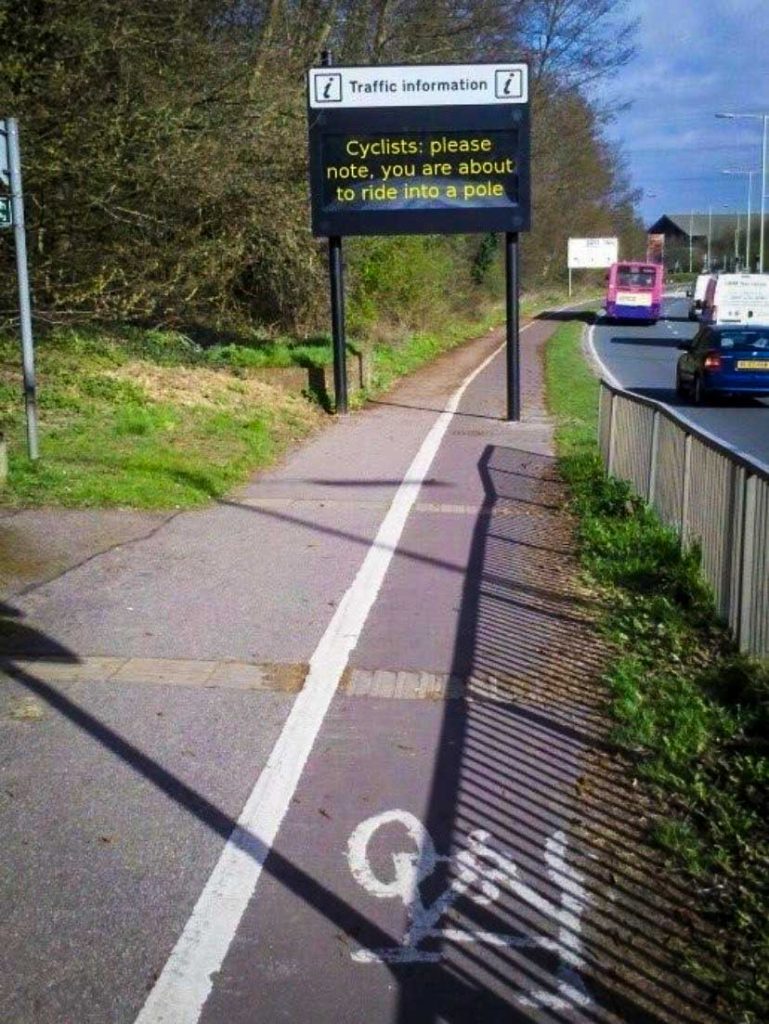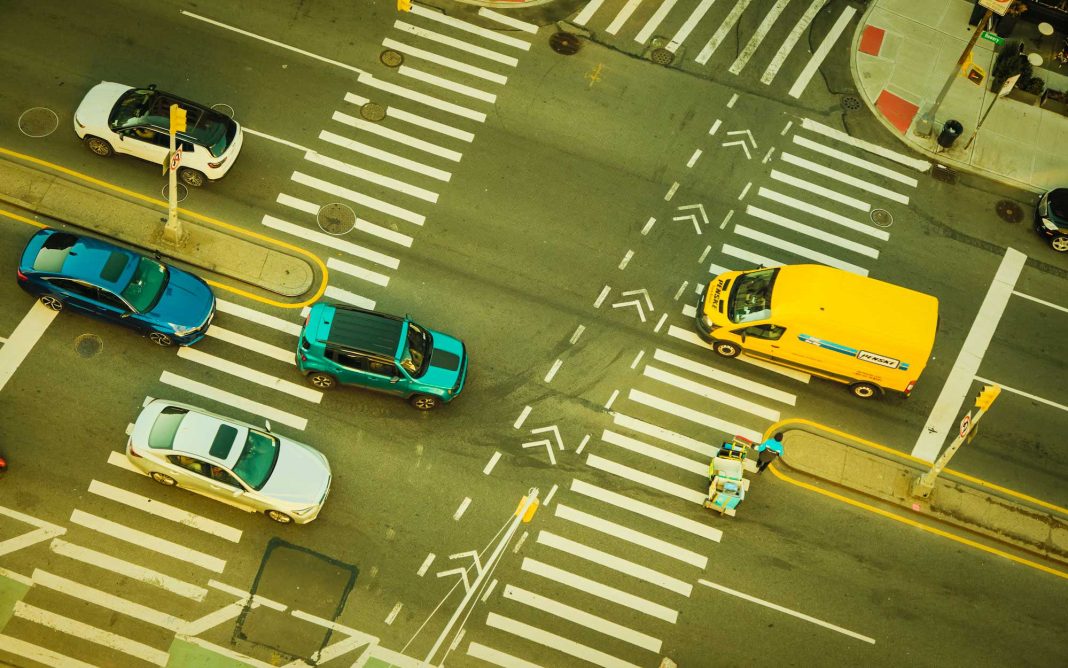As a pedestrian, have you ever crossed the road and waved in appreciation to the driver who stopped to let you go, despite it being you right of way?
And how many times have you approached a similar crossing only for the traffic to speed by with scant regard for the rules of the road or pedestrian safety?
Often, it’s left to the pedestrian to stop and wait their turn, rather than the hurling hunks of metal on wheels that occupy our roads.
City streets can be horrifically dangerous places and anyone who walks or rolls must be beholding to the mercy of bigger, faster road users.
The greenest, most equitable form of transport gets the least respect in our cities and we’re raising a hand in gratitude! How has this happened?
Design Behaving Badly
Road layout tends to prioritise the flow of traffic. It’s hard baked into street design.
Just look at traffic lights. The “turn right on red” rule here in Austria, like many countries, allows vehicles to cut over crossings even when it’s green for pedestrians.
I find this baffling. Cars are allowed to enter the same space as people – which tend to be softer and prone to fairing worse if the two clash. Yet, even when roads are clear of vehicles, foot traffic is expected to seek out official crossings and wait for the signal to cross. It’s based on not allowing people irritatingly interrupt the movement of our precious vehicles.
The message this sends is backwards: people are dangerously thoughtless and must be controlled.
(There is a duality to this message, where design puts responsibility for road safety firmly in the hands of pedestrians: here in Graz, for example, at least one tram stop unloads passengers straight into oncoming traffic. Keep your wits about you!)
Don’t agree? Wander your city and see the design injustices for yourself (unless you live in some progressive Dutch cities, maybe).
I am so often forced to walk in the road because pedestrian zones are blocked by delivery vans or because road signs (and parking metres!) are cemented into paths – a space that walkers already share with cyclists.
Unlike what I’m used to in the UK, call buttons in Graz do nothing to accelerate the traffic light sequence, resulting in a frustratingly long wait. Unless, of course, you’re in a car.
Failing to push a call button, incidentally, usually skips the pedestrian signal altogether. Lose all hope to cross if they’re broken…
Who Is to Blame?

I’m not advocating for a car-free society. There needs to be fewer vehicles on the roads, sure, but they and their infrastructure have a place – emergency response vehicles, access for those with mobility challenges, and deliveries, for example.
Nor do I believe drivers are entirely to blame. It is a systemic problem, hard-wired into design at all stages.
In January 2023, Graz municipality launched a mobility survey: residents’ responses would be used to shape a new strategy. In a clear indication of the administration’s priorities, there was an entire section dedicated to freight but only one question regarding pedestrians.
Thinking like this has taught drivers that their place is at the top of the mobility hierarchy and others suffer because of it. (The others being all of us, by the way. We’re all pedestrians at some point of every journey.)
It’s the same insidious influence that has those going by foot feel the need to thank cars for stopping – which they’re legally obliged to do, remember.
Gesturing appreciation is our way of showing we have accepted our place on the bottommost rung – thus perpetuating the problem.
However, now is not a time for blame. What is important is how we fix it.
Reclaiming the Road
I’d like to see a rule in cities where all spaces are pedestrian by default.
Jamie Wylie told me how Perth in Scotland leveled their pavements so that road and walking traffic were at the same height. Drivers instinctively became more cautious.
It’s in our nature to move slower. As a society, we’re increasingly aware of the value of taking time out to see the world around us. This includes, says Eugene Quinn, the pretty cities of yore, built before cars influences urban design: “I think most people instinctively prefer five kilometre per hour cities. When we go on holidays, we usually go to old cities.”
Let’s make this a priority and give space back to the people.
Where delivery access is required, we should assign parking spaces off pathways so that walkers and rollers can easily pass at all times. Because – and here’s a stubborn bit of thinking – if somewhere is not accessible for a wheelchair, it’s not a pavement for anyone!
If the road isn’t wide enough, cities should seek alternative options if vehicle access truly is needed, such as last mile deliveries.
For any drivers reading this, likely getting defensive, I urge you to think more about others moving around our streets without the protection of a reinforced metal frame. Act accordingly: legally and courteously.
I’ll no longer be raising a hand of thanks when cars stop at a crossing. Instead, I’ll be walking slowly over in solidarity with my fellow footgoers who struggle with the pace inflicted by poorly planned traffic signaling.
It’s time for vehicles to be the ones frustrated. Maybe one day it will affect a city planner – and that could change everything.
Have Your Say
Do you have similar experiences of feeling that, as a pedestrian, you are thought of last in your city’s street design? Or do you feel that it’s more important to keep traffic moving? Have you been involved in initiatives that take on this challenge? Are you a driver who is fed up with being cast as the urban mobility villain? Or were you involved in planning your city’s road network and want the right to reply? Do you lead a project that focuses on exactly this topic that you’d like to tell us about?
Add your thoughts on the issues in this article into the comments below. Remember to always be respectful of other CityChangers and their experiences.


